This article was medically reviewed by Sarah Gehrke, RN, MS. Sarah Gehrke is a Registered Nurse and Licensed Massage Therapist in Texas. Sarah has over 10 years of experience teaching and practicing phlebotomy and intravenous (IV) therapy using physical, psychological, and emotional support. She received her Massage Therapist License from the Amarillo Massage Therapy Institute in 2008 and a M.S. in Nursing from the University of Phoenix in 2013.
There are 13 references cited in this article, which can be found at the bottom of the page.
wikiHow marks an article as reader-approved once it receives enough positive feedback. In this case, several readers have written to tell us that this article was helpful to them, earning it our reader-approved status.
This article has been viewed 424,079 times.
Abscesses are painful, inflamed, pus-filled bumps that are caused by bacterial infections. You can get an abscess, which is also called a boil, anywhere on your body.[1] Some smaller skin abscesses may heal without medical treatment, but you may need additional care for larger abscesses or ones that aren't healing on their own.[2] You can get rid of an abscess by taking care of it at home or having your doctor treat it with drainage and medication.
Steps
Treating an Abscess at Home
-
1Keep your fingers away from the abscess. Avoid the temptation to touch, pick at, or squeeze your abscess. Doing so can spread bacteria and cause further inflammation and a bigger infection.[3]
- Blot away any pus or liquid draining from the abscess with a clean tissue or bandage. Avoid direct contact between your skin and the fingers blotting away the liquid. Throw away the bandage immediately and don’t reuse it.
- Always wash your hands before and after you tend to your abscess so you don't spread an infection. Dangerous infections like MRSA can get into your body through an abscess.
-
2Apply warm compresses to the abscess. Wash your hands with soap and water. Heat a cup of water so that it’s warm to hot and won’t burn your skin. Dip a clean bandage or soft cloth water and place it on the abscess and skin around it. Applying warm or hot compresses can help drain your abscess and reduce your pain and discomfort.
- Apply the compresses several times a day.
- Rub the abscess with the cloth in a gentle circular motion, which can release pus from it. Seeing a little blood when you do this is normal.
Advertisement -
3Soak in a lukewarm bath. Fill your bathtub or small container with lukewarm water. Then soak your body in the tub or the abscess in the water for 10-15 minutes. Soaking may help the abscess drain naturally and minimize your pain and discomfort.[4]
- Clean the tub or small container thoroughly before and after you use it.
- Consider sprinkling the water with baking soda, uncooked oatmeal or colloidal oatmeal, or Epsom salt. These may calm your skin and help to drain the boil naturally.
-
4Clean the abscess and surrounding skin. Wash the abscess with a mild antibacterial soap and clean, warm water. Make sure to clean any skin around the abscess, too. Dab your skin dry with a soft, clean towel.
-
5Cover the abscess with a sterile bandage. Once your abscess is clean, loosely place sterile gauze or a bandage over it.[7] To prevent infection, change the bandage if the abscess drains through it or if the covering gets wet or dirty.[8]
- You can also apply Manuka honey to your abscess with a cotton swab before you cover it to help prevent infection. Make sure you don't dip the used cotton swab back into the honey.[9]
-
6Take pain medication. Use an over the counter pain reliever such as ibuprofen or acetaminophen. Follow dosage instruction closely to relieve any pain and discomfort you have. Pain medications such as ibuprofen may also minimize swelling.[10]
-
7Wash items that make contact with your abscess. Set your washer to high water temperature. Place any clothing or linens or even the washcloth you use as a compress in it. Run the machine and then dry the items of high. This can wash away lingering bacteria that may further inflame or infect your abscess.
-
8Wear loose and smooth clothing. Tight-fitting clothing can irritate your skin and make a boil worse. Wear loose, smooth, and light clothing so your skin can breathe and heal faster.
- Smooth textured clothing such as cotton or merino wool can keep your skin from getting irritated and can prevent excess sweating that may irritate the affected area.
Seeking Medical Treatment
-
1Watch for signs of further infection. Continue self-care as long as your abscess is healing and doesn’t show signs that the infection is getting worse. Look for the following signs the abscess and infection are getting worse and seek immediate medical attention:[11]
- Your skin is getting more red or more painful.
- There are red streaks running from the abscess and surrounding area towards your heart.
- The abscess and surrounding skin feels very warm or hot to the touch.
- Significant pus or other fluid is running from the abscess.
- You have a fever higher than 101.5 °F (38.6 °C).[12]
- You have chills, nausea, vomiting, headache or muscle aches.
-
2Schedule an appointment with your doctor. In some cases, you may need medical attention, such as if you are over the age of 65.[13] Let your doctor know how you’ve treated the abscess at home and any other information that may help them treat it. See your doctor for medical treatment if:[14]
- The abscess is on your spine or in the middle of your face, near your eyes or nose.
- The abscess does not drain on its own.[15]
- The abscess gets bigger or is very large or painful.
- You have diabetes or another chronic health problem such as kidney or liver disease.
-
3Have the abscess drained. Let your doctor lance and drain your abscess with a scalpel or small needle if necessary. Opening and draining the abscess can remove infectious pus or liquid and relieve pressure. Keep any coverings your doctor places over the lanced abscess clean and dry.[16]
- Don't try to drain your abscess at home or you could cause the infection to spread.[17]
- Ask your doctor for a local anesthetic if you have a lot of pain.[18]
- Your doctor may pack the drained abscess with an antiseptic dressing to absorb extra pus and prevent further infection.[19]
- Your doctor may also take a sample of the drained fluid and test for antibiotic-resistant bacteria.[20]
-
4Take a course of topical or oral antibiotics. Get a prescription from your doctor for an antibiotic if the abscess infection is especially severe. Follow dosage instructions your doctor gives and make sure to take the entire course of antibiotics. Taking and finishing an antibiotic can get rid of the infection and may minimize the risk of another abscess or reinfection.[21]
- If you have a good immune system and your abscess is small or located near the surface of your skin, you most likely won't need antibiotics.[22]
Expert Q&A
Did you know you can get premium answers for this article?
Unlock premium answers by supporting wikiHow
-
QuestionI have an abscess on the side of my chin. What should I do?
 Sarah Gehrke, RN, MSSarah Gehrke is a Registered Nurse and Licensed Massage Therapist in Texas. Sarah has over 10 years of experience teaching and practicing phlebotomy and intravenous (IV) therapy using physical, psychological, and emotional support. She received her Massage Therapist License from the Amarillo Massage Therapy Institute in 2008 and a M.S. in Nursing from the University of Phoenix in 2013.
Sarah Gehrke, RN, MSSarah Gehrke is a Registered Nurse and Licensed Massage Therapist in Texas. Sarah has over 10 years of experience teaching and practicing phlebotomy and intravenous (IV) therapy using physical, psychological, and emotional support. She received her Massage Therapist License from the Amarillo Massage Therapy Institute in 2008 and a M.S. in Nursing from the University of Phoenix in 2013.
Registered Nurse If you've had the abscess for more than two weeks or keeps getting worse after one week, you should see your doctor to have the abscess taken care of. Otherwise, follow the above protocol in this article. You may find the warm compresses several times a day helpful as well as keeping the area clean. Applying ice and/or taking an over the counter pain/anti-inflammatory medication (such as ibuprofen) may help the discomfort and swelling. Picking, pinching, or trying to drain it may only make it worse, spread the infection, and lead to scarring on your face.
If you've had the abscess for more than two weeks or keeps getting worse after one week, you should see your doctor to have the abscess taken care of. Otherwise, follow the above protocol in this article. You may find the warm compresses several times a day helpful as well as keeping the area clean. Applying ice and/or taking an over the counter pain/anti-inflammatory medication (such as ibuprofen) may help the discomfort and swelling. Picking, pinching, or trying to drain it may only make it worse, spread the infection, and lead to scarring on your face. -
QuestionHow do you get rid of an abscess of your tooth?
 Sarah Gehrke, RN, MSSarah Gehrke is a Registered Nurse and Licensed Massage Therapist in Texas. Sarah has over 10 years of experience teaching and practicing phlebotomy and intravenous (IV) therapy using physical, psychological, and emotional support. She received her Massage Therapist License from the Amarillo Massage Therapy Institute in 2008 and a M.S. in Nursing from the University of Phoenix in 2013.
Sarah Gehrke, RN, MSSarah Gehrke is a Registered Nurse and Licensed Massage Therapist in Texas. Sarah has over 10 years of experience teaching and practicing phlebotomy and intravenous (IV) therapy using physical, psychological, and emotional support. She received her Massage Therapist License from the Amarillo Massage Therapy Institute in 2008 and a M.S. in Nursing from the University of Phoenix in 2013.
Registered Nurse A tooth-related abscess, if not treated, can last for weeks, months or even years. It will likely not go away on its own, so it's very important not to ignore the symptoms and to seek medical treatment. Until you can see your doctor, rinse your mouth several times a day with a mild salt-water solution. Use 1/2 teaspoon of salt in 8 ounces of water. The dentist will clean the area thoroughly, allow the pus to escape, and treat the infection. Sometimes a root canal is needed.
A tooth-related abscess, if not treated, can last for weeks, months or even years. It will likely not go away on its own, so it's very important not to ignore the symptoms and to seek medical treatment. Until you can see your doctor, rinse your mouth several times a day with a mild salt-water solution. Use 1/2 teaspoon of salt in 8 ounces of water. The dentist will clean the area thoroughly, allow the pus to escape, and treat the infection. Sometimes a root canal is needed.
Warnings
- Never lance or open an abscess by yourself. This should always be done by a doctor or other medical professional.⧼thumbs_response⧽
References
- ↑ http://www.emedicinehealth.com/abscess/article_em.htm
- ↑ http://www.nhs.uk/Conditions/Abscess/Pages/Introduction.aspx#symptoms
- ↑ http://www.nhs.uk/Conditions/Abscess/Pages/Introduction.aspx#symptoms
- ↑ https://www.healthyhorns.utexas.edu/HT/HT_boils.html
- ↑ https://www.nlm.nih.gov/medlineplus/ency/article/001474.htm
- ↑ https://www.healthyhorns.utexas.edu/HT/HT_boils.html
- ↑ http://www.mayoclinic.org/diseases-conditions/boils-and-carbuncles/manage/ptc-20214770
- ↑ https://www.healthyhorns.utexas.edu/HT/HT_boils.html
- ↑ https://www.ncbi.nlm.nih.gov/pmc/articles/PMC3609166/
- ↑ https://www.healthyhorns.utexas.edu/HT/HT_boils.html
- ↑ https://www.healthyhorns.utexas.edu/HT/HT_boils.html
- ↑ https://medlineplus.gov/ency/article/003090.htm
- ↑ https://www.healthyhorns.utexas.edu/HT/HT_boils.html
- ↑ https://www.nlm.nih.gov/medlineplus/ency/article/001474.htm
- ↑ https://www.healthyhorns.utexas.edu/HT/HT_boils.html
- ↑ https://www.healthyhorns.utexas.edu/HT/HT_boils.html
- ↑ https://www.healthyhorns.utexas.edu/HT/HT_boils.html
- ↑ http://www.nhs.uk/Conditions/Abscess/Pages/Treatment.aspx
- ↑ http://www.nhs.uk/Conditions/Abscess/Pages/Treatment.aspx
- ↑ https://www.ncbi.nlm.nih.gov/pmc/articles/PMC2231432/
- ↑ http://www.mayoclinic.org/diseases-conditions/boils-and-carbuncles/diagnosis-treatment/treatment/txc-20214977
- ↑ http://www.aafp.org/afp/2015/0915/p474.html
- ↑ https://www.healthyhorns.utexas.edu/HT/HT_boils.html
About This Article
If you need to get rid of an abscess, wash your hands with soap and water before you tend to it to avoid the dangerous spread of infection. Apply a warm compress to the infected area for 10-15 minutes several times a day, which can help drain the abscess and relieve your pain and discomfort. You can also soak the abscess in warm water to help it drain naturally. Keep the abscess covered with a clean bandage, and avoid tight-fitting clothing that irritates your skin. Read on for tips from our medical reviewer on when you should seek medical treatment, such as if you have a fever or the abscess feels very warm to the touch.
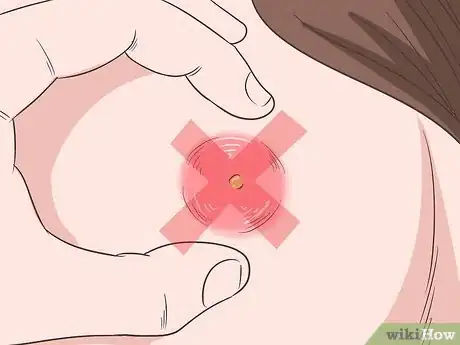
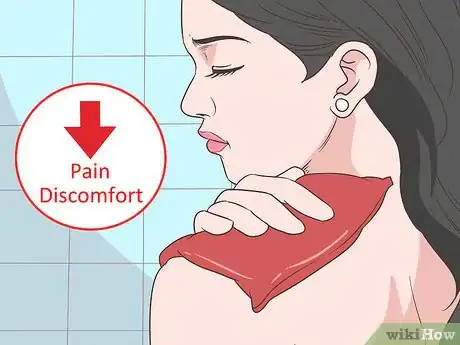
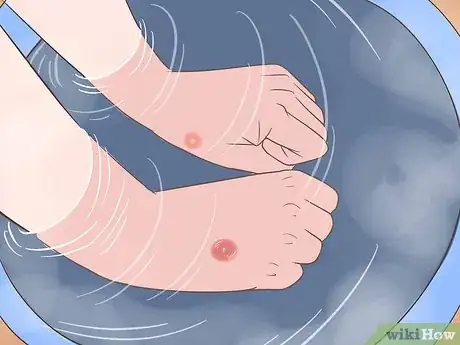


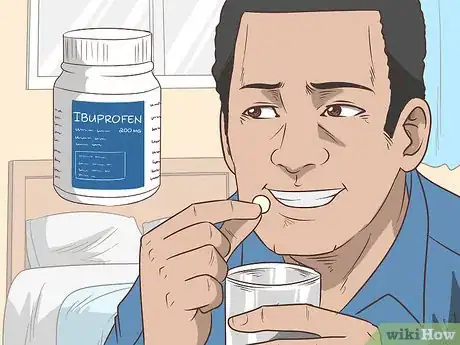
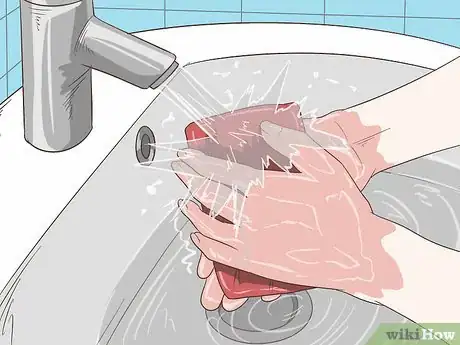

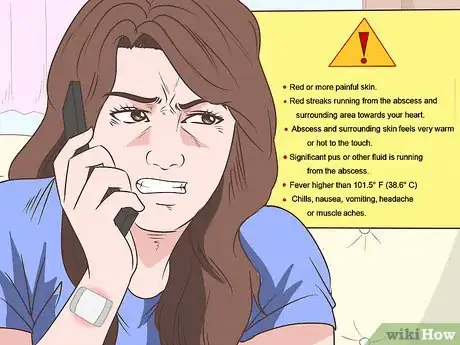
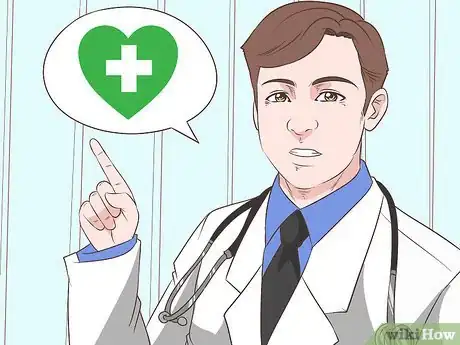


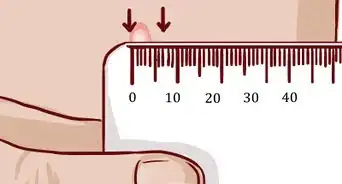


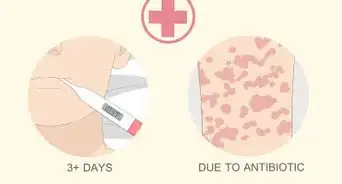



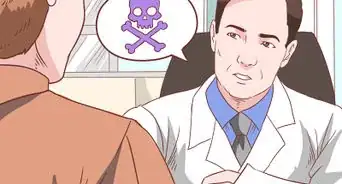

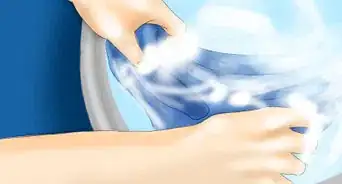
-Step-11.webp)
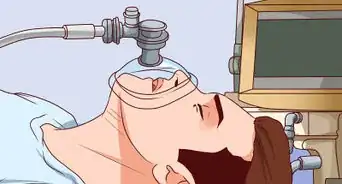
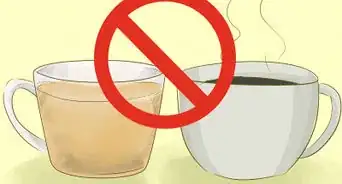












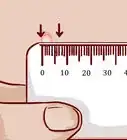
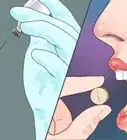

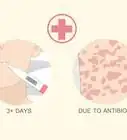



































Medical Disclaimer
The content of this article is not intended to be a substitute for professional medical advice, examination, diagnosis, or treatment. You should always contact your doctor or other qualified healthcare professional before starting, changing, or stopping any kind of health treatment.
Read More...